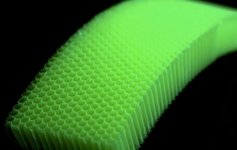This started in the modular thread then I realized I was off topic so now it’s here
The 5-7 year rule. I’m not sure where that comes from or how valid it is at this point. I’d assume that as helmet manufacturering technology has improved over the last decade as have materials that this “rule of thumb” that I’ve heard ever since I bought a helmet has to be better than this by now. On the flip side manufacturers have to sell helmets so it’s not in their best interest to make a helmet that’s good for 20 years. I honestly don’t know what to believe anymore.
I think UV exposure used to be a factor but if you only ride weekends 6-8 months a year does it reallly come into play?
The 5-7 year rule. I’m not sure where that comes from or how valid it is at this point. I’d assume that as helmet manufacturering technology has improved over the last decade as have materials that this “rule of thumb” that I’ve heard ever since I bought a helmet has to be better than this by now. On the flip side manufacturers have to sell helmets so it’s not in their best interest to make a helmet that’s good for 20 years. I honestly don’t know what to believe anymore.
I think UV exposure used to be a factor but if you only ride weekends 6-8 months a year does it reallly come into play?
Last edited:


